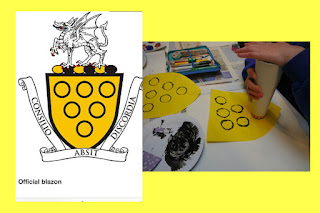Weavers' sculptures
 |
| Two mill workers and mill owner's wife |
 |
| Mill workers |
They were cheap to employ and as they were small, were sent under the machines, whilst they were still running, to clean, tie yarn and make repairs. It was hard dangerous work for all in noisy, dusty conditions. Only wealthy children went regularly to school (not made compulsory until 1880 for 5 - 12 year olds). Charity schools and Sunday schools taught children how to read, knit and sew however.
As the cotton industry grew, workers flooded into Carlisle, most were agricultural workers. Living conditions were cramped, close to the Mills. There were ten thousand, mostly in the Caldewgate area.
We learned about the 'put out' system - where hand loom weavers worked on a loom in their own home. The whole family would be involved and for a week's weaving would be paid 'seven bob' by a merchant who would collect the finished cloth.
Half of the mill workers lived in poverty and around 1823 some petitioned the King pleading to be sent to America. In 1826 the mill workers rioted in protest over their living and working conditions.
We discussed what it would have been like to have lived then and made drawings in our sketchbooks.
Using cardboard cones from the weaving industry today and material from Linton Tweeds, we designed and made individual weaver sculptures. We learned new skills making our figures and the faces show scars and many are in tears showing their unhappiness.





Comments
Post a Comment